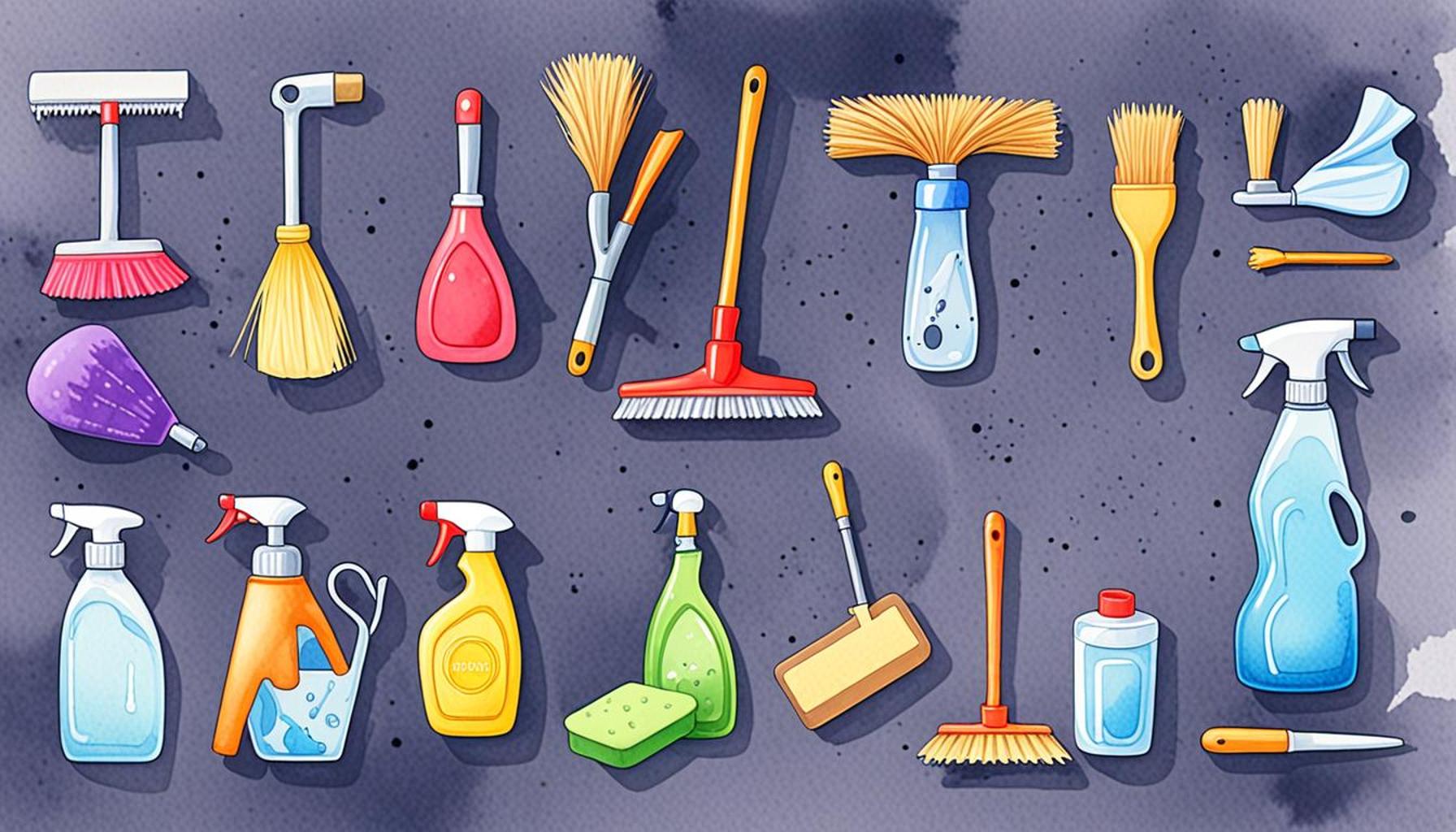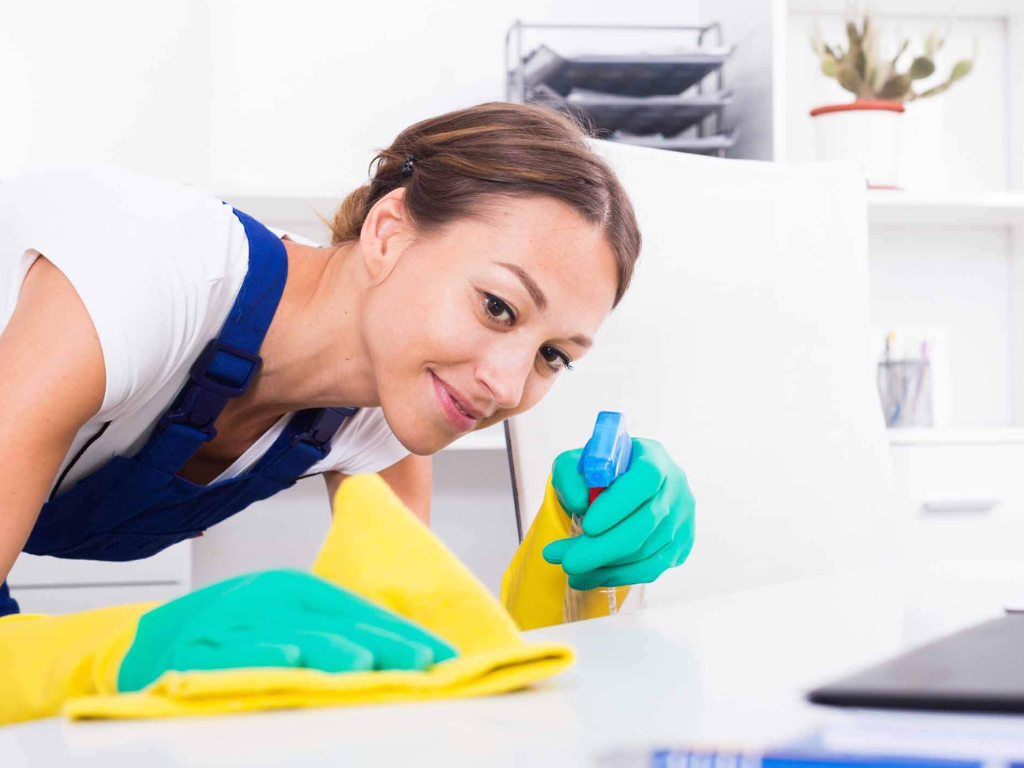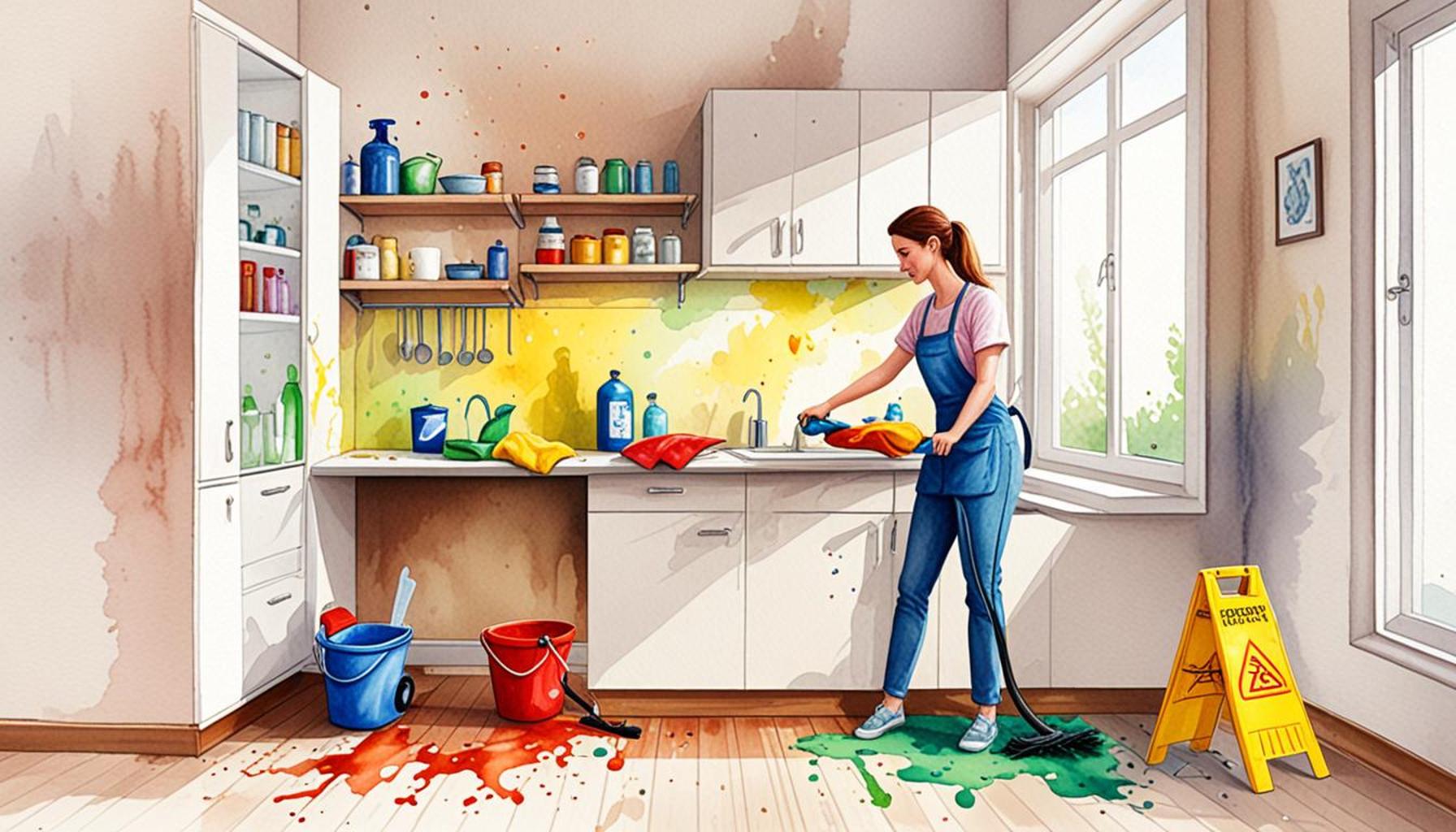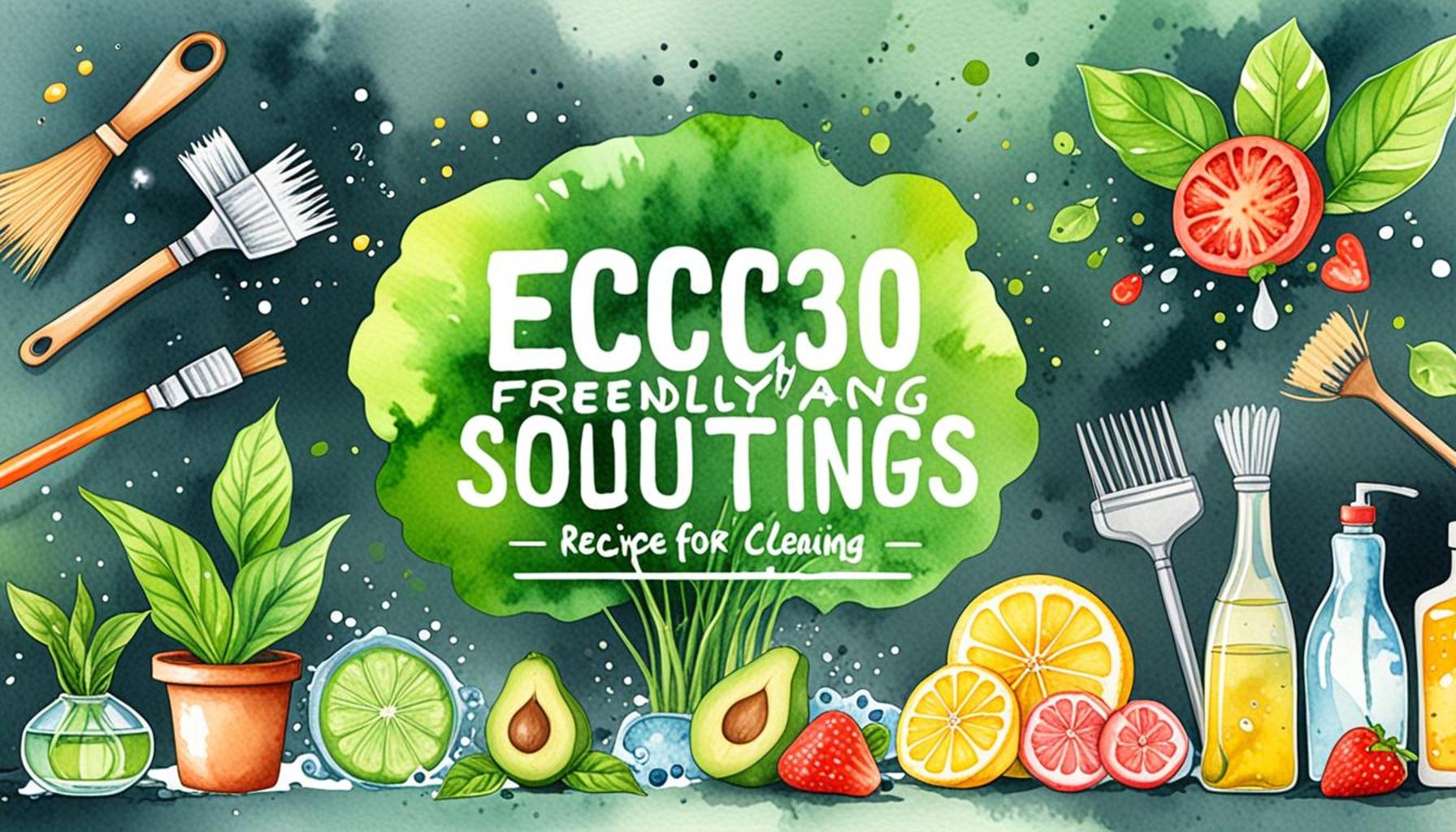The importance of knowing surface types for efficient cleaning: Practical tips

Effective Cleaning Methods for Various Surfaces
When it comes to maintaining a clean environment, having a thorough understanding of the diverse surface types around you is paramount. Each material presents unique challenges and advantages, necessitating tailored cleaning approaches to avoid damage while achieving optimal cleanliness. By familiarizing yourself with these variations, you can create a healthier living or working space.
Here are some common surface types and their characteristics:
- Wood: This classic material is beloved for its aesthetic appeal but requires careful handling. Gentle cleaning agents, preferably pH-balanced, should be used to prevent warping or fading. For instance, using a solution of water mixed with mild soap is often effective. Additionally, applying natural oils periodically can help restore a wood surface’s luster.
- Tile: Tile surfaces are known for their durability but can be a double-edged sword when it comes to maintenance. While the tiles themselves are resilient, the grout lines often absorb stains and dirt more readily. Using an oxygen bleach solution can be beneficial in lifting stains without damaging the tile’s finish. Regular sealing of the grout can also prevent moisture and dirt from settling in.
- Carpet: Carpets can harbor allergens and bacteria, making special care essential. Choosing the right cleaning solutions is critical; for example, enzyme-based cleaners can break down stains effectively without harming the fibers. Utilizing a vacuum with a HEPA filter regularly prevents buildup, enhancing both cleanliness and air quality.
- Glass: A glass surface can elevate the ambiance of any room but often requires meticulous cleaning to achieve that coveted streak-free shine. Products containing ammonia or vinegar can be particularly effective. Using a microfiber cloth for application ensures that there are no scratches and removes dust efficiently.
Understanding the right products and techniques for cleaning these surfaces can significantly enhance your cleaning efficiency and results. For example, vacuuming carpets not only prevents dirt buildup but also prolongs the life of the fibers. Meanwhile, a microfiber cloth, which is adept at picking up dust and grime, can enhance the shine on wooden surfaces without leaving residue.
Moreover, knowledge of the chemical compositions of cleaners and their compatibility with various surfaces is crucial. For instance, acidic cleaners can be damaging to natural stone tiles but work wonders on glass. Such understanding can prevent costly mistakes, avoiding damage to your belongings and ensuring longevity.
In the following sections, we will dive deeper into practical tips and methods tailored to specific surfaces. This knowledge will empower you to clean more effectively and efficiently, saving time and effort while achieving outstanding results. Whether it’s a quick touch-up or a thorough spring cleaning, being well-versed in cleaning strategies can make all the difference in maintaining a beautiful and welcoming environment.

DIVE DEEPER: Click here for eco-friendly cleaning solutions
Choosing the Right Cleaning Approach for Different Materials
Establishing a robust cleaning regimen begins with recognizing the distinct surface types in your environment. Knowing whether you’re working with textiles, hard surfaces, or finishes dictates the cleaning methods you should adopt. By aligning your techniques with specific materials, you not only achieve better cleaning outcomes but also protect your investments—from expensive carpets to elegant wood furniture.
Let’s explore some critical surface types in more detail and provide practical tips to enhance your cleaning arsenal:
- Natural Stone: Naturally occurring stones such as granite, marble, and limestone are celebrated for their beauty and durability. However, they require particular care, as acidic cleaners can etch their surfaces. Utilize a gentler solution, like warm water mixed with dish soap, and always dry the surface immediately afterwards to avoid moisture damage. Additionally, sealing natural stone can help maintain its integrity.
- Vinyl and Laminate: Often used in homes for their affordability and resilience, vinyl and laminate surfaces can be easily cleaned with a simple mixture of vinegar and water. However, avoid abrasive scrubbers that could scratch the surface. Regular sweeping or vacuuming prevents dirt from accumulating, ensuring that your floors remain visually appealing.
- Upholstery: Fabric upholstery serves as a comfort staple in many American homes but can be a magnet for spills and stains. For synthetic fibers, an all-purpose cleaner or a solution of water and mild detergent is typically effective. Always consult care tags for specific guidelines and consider professional cleaning for delicate fabrics to ensure longevity.
- Stainless Steel: This popular material in kitchens is often mistaken for being indestructible; however, it requires its own set of care rules. Use a soft cloth to apply a dedicated stainless-steel cleaner or a mixture of vinegar and olive oil for a natural approach. Always clean in the direction of the grain to maintain its sleek appearance and eliminate streaks.
Understanding these surface types can significantly elevate your cleaning game. For instance, learning that wood surfaces need a specified approach can prevent irreversible damage from harsher chemicals. On the other hand, regular maintenance like polishing or sealing certain surfaces can lead to not just cleanliness but also the preservation of those surfaces over time.
Moreover, the role that cleaning technology such as advanced vacuums or steam cleaners plays cannot be overlooked. Educating yourself about the correct tools for each surface type can yield profound results. For instance, a steam cleaner is ideal for sanitizing tile and grout, leaving surfaces not only clean but germ-free. Conversely, a standard vacuum may suffice for regular upkeep on carpets.
The journey to effective cleaning is paved with knowledge. By investing time in understanding the surfaces you work with, you can unlock the most efficient cleaning methods that enhance not only the appearance but also the lifespan of various materials in your space. Exploring the next segments will uncover even more practical tips catered to your cleaning needs, empowering you to maintain a pristine environment effortlessly.
The Importance of Knowing Surface Types for Efficient Cleaning: Practical Tips
Understanding the various types of surfaces in your home or workspace is crucial for implementing effective cleaning strategies. Different materials—such as wood, tile, carpet, and upholstery—require specialized cleaning methods and products. Using an inappropriate technique can not only lead to ineffective cleaning but also potentially damage the surface.For instance, a common mistake is using abrasive cleaners on delicate surfaces like marble or wood. Instead, using gentle, pH-balanced products can maintain their integrity while ensuring a thorough clean. Similarly, recognizing the right techniques for carpets versus hard floors is essential. Vacuuming regularly is vital for carpets, while mopping is important for hard surfaces to avoid dulling.To further enhance your cleaning routine, you can create a detailed cleaning schedule that takes surface types into account. For example, high-traffic areas may need more frequent cleaning than seldom-used spaces. Investing time in knowing your surface types can lead to a more hygienic environment and preserve your home’s aesthetic appeal. Another beneficial practice is to educate yourself about the various cleaning agents available on the market. Products formulated for specific surfaces often yield better results and can minimize potential damages. Additionally, knowing the appropriate tools, such as microfiber cloths for electronics and natural sponges for kitchen surfaces, can significantly enhance your cleaning effectiveness.Incorporating knowledge about surface types will also allow you to make informed decisions about eco-friendly cleaning options, which are not only safer for the environment but also for the health of your family and pets. Understanding the specific needs of each surface can empower you to maintain a cleaner, healthier living space. For a better grasp on how different surfaces react to various cleaning techniques, check out our comprehensive table below that highlights the advantages of knowing surface types for efficient cleaning.
| Surface Type | Key Cleaning Techniques |
|---|---|
| Wood | Use gentle cleaners, avoid excess water |
| Tile | Mop with mild detergent, dry thoroughly |
| Carpet | Regular vacuuming, spot cleaning stains |
| Upholstery | Use fabric-specific cleaners, test on small area |
Exploring the intricacies of surface types and adapting your cleaning strategies accordingly will not only simplify your routine but also optimize cleanliness. Don’t underestimate the value of this knowledge—it is a cornerstone of efficient cleaning practices and can drastically improve your overall environment.
DON’T MISS: Click here to discover the advantages of time blocking
Specialized Cleaning Techniques for Various Surfaces
Once you develop an understanding of the diverse surface types in your home or workspace, employing specialized cleaning techniques becomes essential. Expanding your cleaning knowledge beyond basic solutions can help you maintain a healthy environment, prevent damage, and extend the lifespan of your surfaces. Let’s delve into some additional surfaces that require unique care while providing actionable tips for a successful cleaning routine.
- Wood Floors: These surfaces are not only a popular choice but also a sizable investment that can add warmth to any room. To properly clean wood floors, avoid excess water, which can seep into seams and cause warping. Instead, use a microfiber mop dampened with a special wood floor cleaner or a mixture of vinegar and water at a 1:10 ratio. Additionally, regularly applying a wood polish enhances both shine and protection against scratches.
- Glass: Maintaining the clarity of glass surfaces, such as windows and glass tabletops, requires an effective cleaning technique. For streak-free results, utilize a solution of equal parts water and white vinegar, applied with a soft cloth or squeegee. For tougher grime, try spraying the solution, allowing it to sit for a minute before wiping away. Ensure you clean on cloudy or cooler days to prevent the cleaner from drying too quickly, resulting in streaks.
- Carpets: Carpets trap allergens and dirt, making proper care paramount. Regular vacuuming is crucial, coupled with steam cleaning every 6 to 12 months to remove embedded dirt and allergens. For spot cleaning, always act fast! Blot spills with a clean cloth and apply a mixture of warm water and mild detergent. Avoid rubbing the stain, as this can push it deeper into the fibers.
- Tile and Grout: Cleaning tile can be straightforward, but grout often presents a challenge due to its porous nature. A solution of baking soda and water works wonders as a paste to scrub grout lines. For stubborn stains, consider using hydrogen peroxide or commercial-grade cleaners that are specifically formulated for grout. Seal your grout lines after cleaning to prevent future staining and minimize maintenance.
While understanding the surface type is fundamental, last-minute solutions or “quick fixes” can lead to mishaps. The relationship between cleaning products and surface compatibility cannot be overstated. For example, using bleach on colored surfaces can lead to irreversible discoloration, while oily substances might yellow plastics over time. Therefore, reading labels and thoroughly researching the appropriate cleaning products is crucial to mitigate damage.
Moreover, cleaning tools play an equally vital role. Investing in microfiber cloths can trap more dirt and allergens compared to traditional cloths. Additionally, using brushes with soft bristles can prevent scratching on sensitive surfaces, while stiff bristle brushes can be employed for tougher materials. Knowing the interaction between tools and surfaces increases efficacy while ensuring careful handling during your cleaning routine.
Adopting these specialized cleaning techniques will not only improve the appearance of your spaces but also contribute to a healthier living environment. Take note of the individual needs of your different surfaces, and adapt your practices accordingly. Embracing a tailored cleaning approach based on material types opens the door to an effortless, effective, and lasting cleanliness.
DISCOVER MORE: Click here to dive deeper
Conclusion
Understanding the unique characteristics of various surface types in your home or workspace is crucial for achieving an efficient cleaning routine. As we’ve explored, different materials require tailored techniques that not only enhance cleanliness but also preserve the integrity of the surfaces. From gentle methods for wood floors to effective solutions for carpets and glass, the right approach can significantly impact both the appearance and longevity of your investments.
Moreover, knowledge of the cleaning products and tools best suited for each surface fosters a proactive cleaning habit that minimizes damage and maximizes efficacy. For instance, being aware of the pitfalls associated with common household cleaners, such as the adverse effects of bleach on colored surfaces, equips you with the ability to make informed decisions on product use. In addition, choosing the right tools—like microfiber cloths and soft-bristled brushes—ensures a safe and thorough cleaning experience.
In conclusion, by recognizing the importance of knowing surface types, you can create an organized and efficient cleaning regimen that goes beyond mere aesthetics. It encourages a healthier living environment, reduces maintenance efforts, and ultimately leads to long-lasting satisfaction with your space. As you incorporate these practical tips into your cleaning routine, remember that a mindful approach to cleaning today paves the way for a more vibrant and welcoming home tomorrow.


